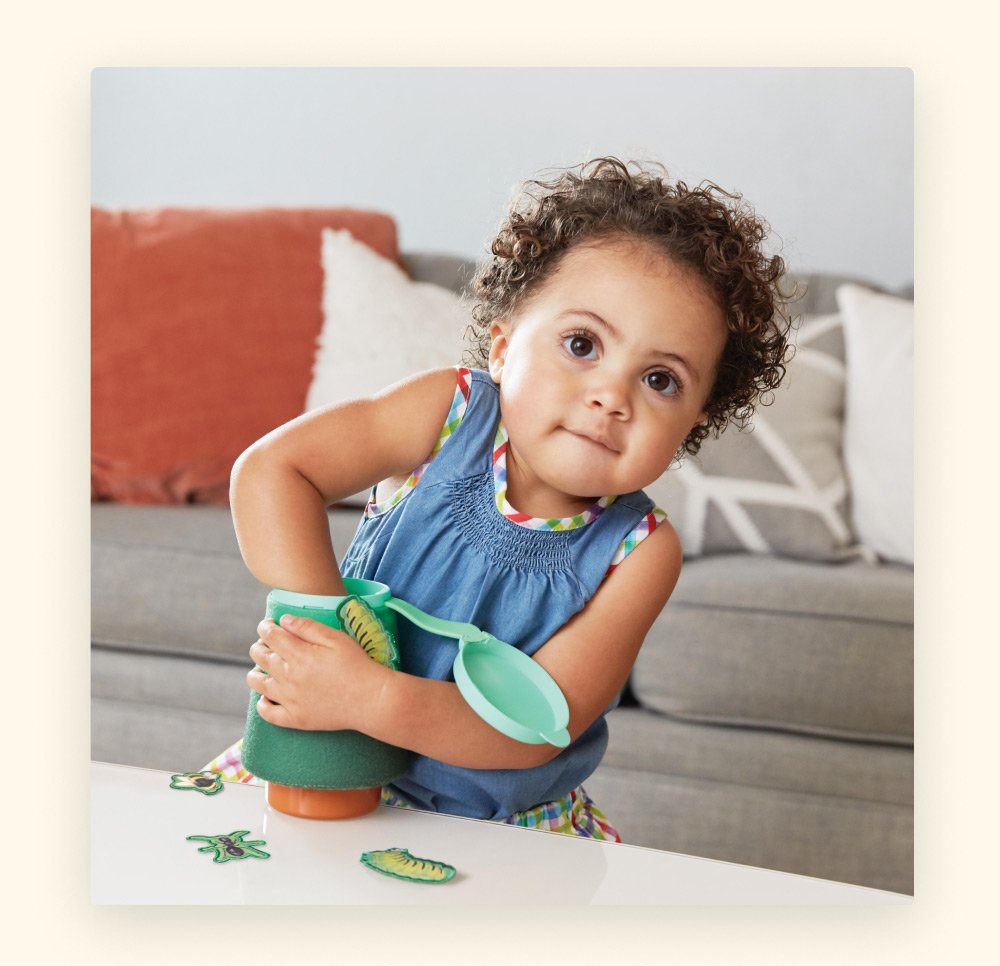Celebrating Black History Month with babies and young children

February is Black History Month, a time to celebrate the achievements and contributions of Black Americans to history, culture, and society. What started in 1926 as a weeklong effort to encourage schools to incorporate Black American history into their curricula grew into a full month of celebration and education in 1970, and is now recognized in countries all over the world. Historically underrepresented in media and education, Black innovators, athletes, scientists, politicians, artists, and everyday people are centered in the month of February.
Books are among the most effective ways of demonstrating to children the strength of diversity. During Black History Month—and throughout the year—books that center the accomplishments of Black people both past and present (as well as positive representations of hair, skin, eyes, and other body parts babies love to look at) give young children the opportunity to “meet” all kinds of people.
It’s important to complement books about famous Black people who defied the odds and made history with others that celebrate the beauty and complexity of Black culture and identity. Very young children are able to engage, even subconsciously, with a framework called “windows and mirrors,” coined by educator Rudine Sims Bishop. This way of looking at books and media involves noticing both elements you recognize (mirrors) and some that may be new (windows).
A mirror may be something like “that kid looks just like me” or “I like bananas too!” and a window may be “my hair is different from hers” or “I’ve never played that game before.” Black children need more mirrors, and children of other racial backgrounds need more windows into the lives of Black people.
We’ve compiled a list of books below to help you get started:
- Shades of Black by Sandra L. Pinkney, photography by Myles C. Pinkney—full of photographs of Black children, this book celebrates the colors and textures of Black hair, skin, and eyes
- The Story of Martin Luther King, Jr. by Johnny Ray Moore, illustrated by Amy Wummer—this simple board book is a great introduction to to Dr. King for very young children
- Whose Toes are Those? by Jabari Asim, illustrated by LeUyen Pham—a loving, rhyming book about brown feet and toes
- A Lullaby (for a Black Mother) poem by Langston Hughes, illustrated by Sean Qualls—a Langston Hughes poem about a Black mother’s love for her baby, brought to life with paintings and collage
- Brown Boy Joy by Thomishia Booker, illustrated by Amanda Gibson and Vicky Amrullah—a simply told book celebrating Black boys and what they love
- Happy To Be Nappy by bell hooks, illustrated by Chris Raschka—all about the beauty of Black hair
- The Quickest Kid in Clarksville by Pat Zietlow Miller, illustrated by Frank Morrison—an exciting book about a fleet-footed girl inspired by Olympic runner Wilma Rudolph
- The Proudest Blue: A Story of Hijab and Family by Ibtihaj Muhammad and S.K. Ali, illustrated by Hatem Aly—Muhammad, who the first American Muslim woman to wear a hijab while competing in the Olympics, lovingly tells the story of a child’s first day of school with a hijab
- The Day You Begin by Jacqueline Woodson, illustrated by Rafael López—a powerful, beautiful book about loneliness and connection
- Before She was Harriet by Lesa Cline-Ransome, illustrated by James E. Ransome—this lyrical, poetic book is a great introduction to Harriet Tubman for very young children
- Mae Among the Stars by Roda Ahmed, illustrated by Stasia Burrington—tells the story of Mae Jemison, the first Black woman in space, in simple language and vibrant colors
- Libba: The Magnificent Musical Life of Elizabeth Cotten by Laura Veirs, illustrated by Tatyana Fazlalizadeh—the moving story of an underrecognized pioneer of American folk music
- I am Rosa Parks by Brad Meltzer, illustrated by Christopher Eliopoulos—a great introduction to the story of Rosa Parks
- Unspoken: A Story from the Underground Railroad by Henry Cole—a wordless book about a man finding freedom and the child who befriends him
- All the Colors We Are by Katie Kissinger, photography by Chris Bohnhoff—an explanation of why our skin comes in so many different colors
- We March by Shane Evans—a great introduction to what it means, looks like, feels like, and sounds like to march for civil rights
- Hey Black Child by Useni Eugene Perkins, illustrated by Bryan Collier—poet Perkins speaks to directly to Black children about who they are and who they can be
- Baby Says by John Steptoe—baby will stop at nothing to get his big brother’s attention
Posted in: 12 - 48 Months, 13 - 15 Months, 0 - 12 Months, Identity, Literacy, Books, Race, Child Development, Uncategorized
Keep reading

12 - 48 Months
0 - 12 Months
Join the Lovevery Research Community and explore new playthings
Inform and inspire Lovevery creators through product testing, focus groups, surveys and more.

13 - 15 Months
16 - 18 Months
19 - 21 Months
The enveloping schema: what’s behind your toddler’s fascination in hiding things
Does your toddler love hiding under a blanket or stuffing little toys between the couch cushions? Covering up and hiding objects is a type of schema play known as “enveloping.”

13 - 15 Months
16 - 18 Months
19 - 21 Months
What to do when your 1-year-old takes another child’s toy
Grabbing at this toddler stage isn’t malicious and doesn’t need a consequence or any form of discipline. Learn what to do instead.

